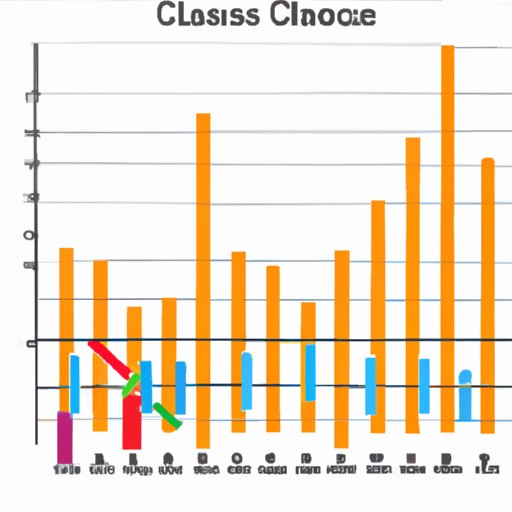I. Introduction
When analyzing data, it’s important to understand how to organize information into meaningful groups. One of the most fundamental concepts in statistical analysis is the class width. In this article, we’ll explore what class width is, how to find it, and how to use it to optimize your data visualization. Whether you’re new to data analysis or a seasoned pro, this beginner-friendly guide will provide useful insights and practical tips for getting the most accurate results from your data.
II. A Beginner-Friendly Guide to Understanding Class Width
Class width refers to the range of values that are grouped together in a data set. The purpose of class width is to organize data into meaningful categories that can be used to create a histogram, which is a visual representation of the data.
The formula for calculating class width is:
Class Width = (Maximum Value – Minimum Value) / Number of Classes
For example, let’s say we have a data set of the ages of people in a particular neighborhood. We want to group them into classes to create a histogram. We have observed that the oldest person in the neighborhood is 80 years old, and the youngest is 10. We want to group them into 10 classes.
Applying the formula, we get:
Class Width = (80 – 10) / 10 = 7
Therefore, our class width is 7. We can now create our histogram by grouping ages into 7-year intervals.
III. Step-by-Step Guide: Finding the Best Class Width
When selecting a class width for a histogram, it’s important to consider a number of factors. These include the range of the data, the sample size, and the shape of the distribution. Here’s a step-by-step guide to help find the best class width for your data:
- Determine the range of your data.
- Decide on the number of classes you want to use in your histogram.
- Use the formula for calculating class width.
- Round your class width to a convenient number.
- Create your histogram.
While these steps are straightforward, there are a few additional factors to consider when selecting a class width.
IV. Maximizing Data Visualization: Tips for Choosing Your Class Width
When selecting your class width, it’s important to consider how it will affect the visual appearance of your histogram. The class width should be small enough to reveal detail in the data but large enough to make the pattern in the data clear. Here are some tips for selecting a class width that maximizes data visualization:
- Start by selecting a class width based on the range of your data and the number of classes you want to use.
- Adjust your class width up or down to create a histogram that reveals a clear pattern in the data.
- Try different class widths to see which one best represents the data.
- Be sure to label your axes and add a title to your histogram to make it easy to interpret.
V. Avoiding Common Mistakes in Class Width Selection
One of the most common mistakes people make when selecting a class width is using a width that is too large. When the class width is too large, important details in the data may be obscured, and patterns in the data may not be visible. Another common mistake is using a width that is too small. When the class width is too small, the histogram may become overcrowded and difficult to read.
To avoid these mistakes, it’s important to follow best practices for selecting a class width. These include:
- Start with a class width based on the range of the data and the number of classes.
- Adjust the class width to create a histogram that clearly reveals the pattern in the data.
- Consider the sample size of your data set when selecting your class width.
- Check to make sure your histogram is not overcrowded and is easy to read.
VI. Data Analysis Simplified: How to Determine the Optimal Class Width
Now that you understand the importance of class width in data analysis, you can apply that knowledge to any data set you want to analyze. By following the steps outlined in this article, you can select a class width that captures the important details of your data and helps you identify patterns and relationships.
For example, let’s say we have a different data set with the ages of people in a city. This data set has a range of 100, and we want to group it into 8 classes. Using the formula for calculating class width, we get:
Class Width = (Maximum Value – Minimum Value) / Number of Classes = 12.5
Therefore, the optimal class width for this data set is 12.5. By using this class width, we can create a histogram that reveals a clear pattern in the data.
VII. Conclusion
Understanding class width is a fundamental concept in data analysis. By selecting the appropriate class width, you can organize your data in a way that reveals patterns and relationships that might not be apparent otherwise. By following the steps outlined in this article, you can find the best class width for any data set and create a histogram that maximizes data visualization. By avoiding common mistakes and following best practices, you can ensure that your data analysis is accurate and easy to interpret.
Remember to consider the range of your data, the sample size, and the shape of the distribution when selecting your class width.
